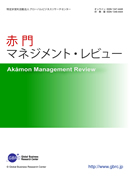
- |<
- <
- 1
- >
- >|
-
Modularization in PrintersHaruhiko NakamuraArticle type: research-article
2024Volume 23Issue 1 Pages 1-30
Published: February 25, 2024
Released on J-STAGE: February 25, 2024
Advance online publication: February 01, 2024JOURNAL FREE ACCESSMeasuring product architecture typically requires a cooperation with product development teams, but this can be challenging in practice, particularly for latecomer economies. This study introduces a novel Decomposing Approach that identifies product architecture through product disassembly. This approach is rooted in existing approaches by bridging the function-structure and interface analysis methodologies. This paper applied Decomposing Approach to printers, which are typically seen as integral products while exhibiting some partial modularization in their underlying layers. Through the Decomposing Approach, this paper identified modularized layers and quantified their degrees of modularization. The findings reveal the presence of modularized layers within printer architecture, with varying degrees of modularity among different printer types.
View full abstractDownload PDF (3953K)
-
Chapter 5 of Technical Notes Series on Howard-Grenville et al. (2016)Yoshiaki Yamasiro2024Volume 23Issue 1 Pages 31-40
Published: February 25, 2024
Released on J-STAGE: February 25, 2024
Advance online publication: December 26, 2023JOURNAL FREE ACCESSChapter 5 attempts to explain phenomena where behavioral patterns undergo radical changes, following the framework proposed by Arthur (2009). Here, the importance of intentional recombination, rather than random variation, is emphasized. Drawing on the role of recombination in technological evolution as discussed by Arthur (2009), this chapter reviews evolutionary processes in non-biological domains. Taking into account the perspective of routine diffusion, it examines the role of time and mechanisms, and constructs a model of the process where routines undergo radical changes using narrative networks.
View full abstractDownload PDF (487K)
- |<
- <
- 1
- >
- >|